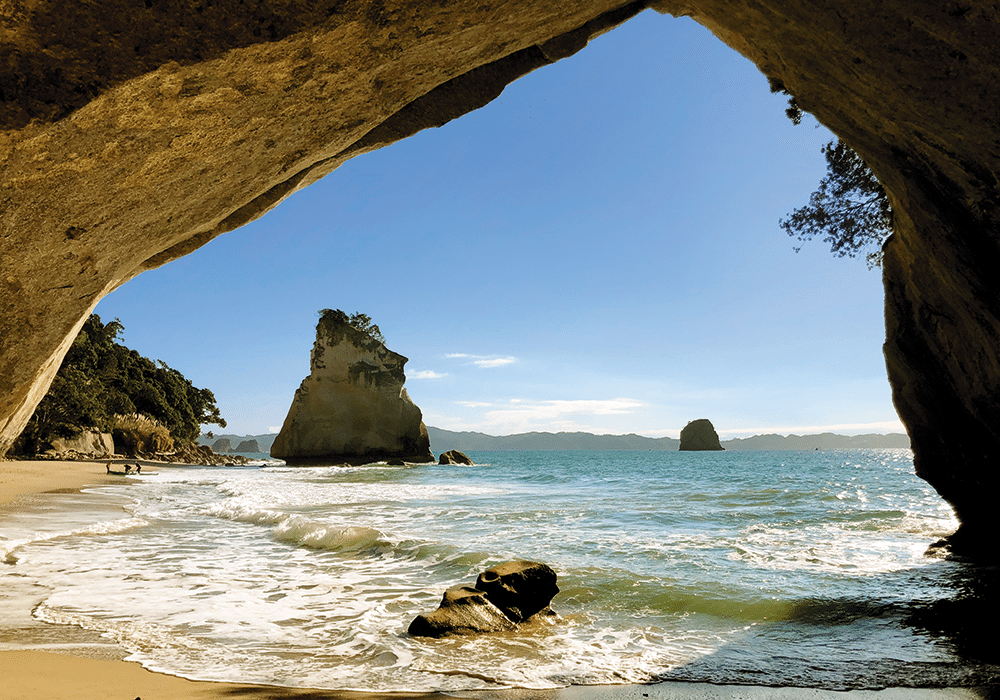When the summer crowds have gone, Hahei and its surrounds reveal their tranquil beauty. Lisa Jansen reports on a winter visit.
There are some places in New Zealand that travellers who don’t like crowds should avoid during the main travel seasons. The east coast of the Coromandel is one of those places.
Thanks to several world-famous attractions, and stunning white, sandy beaches, the area is extremely popular during the summer holidays. Visiting means dealing with carpark shortages, walking popular tracks in single file and waiting patiently for your ice cream or drinks. Taking a photo of famous Cathedral Cove without a stranger in the picture can seem almost impossible.
However, visit those same places in the off-season, and you’re likely to have a very different experience. Once the summer rush eases off, Hahei and the surrounding area turn into a peaceful place with lots to explore and enjoy.
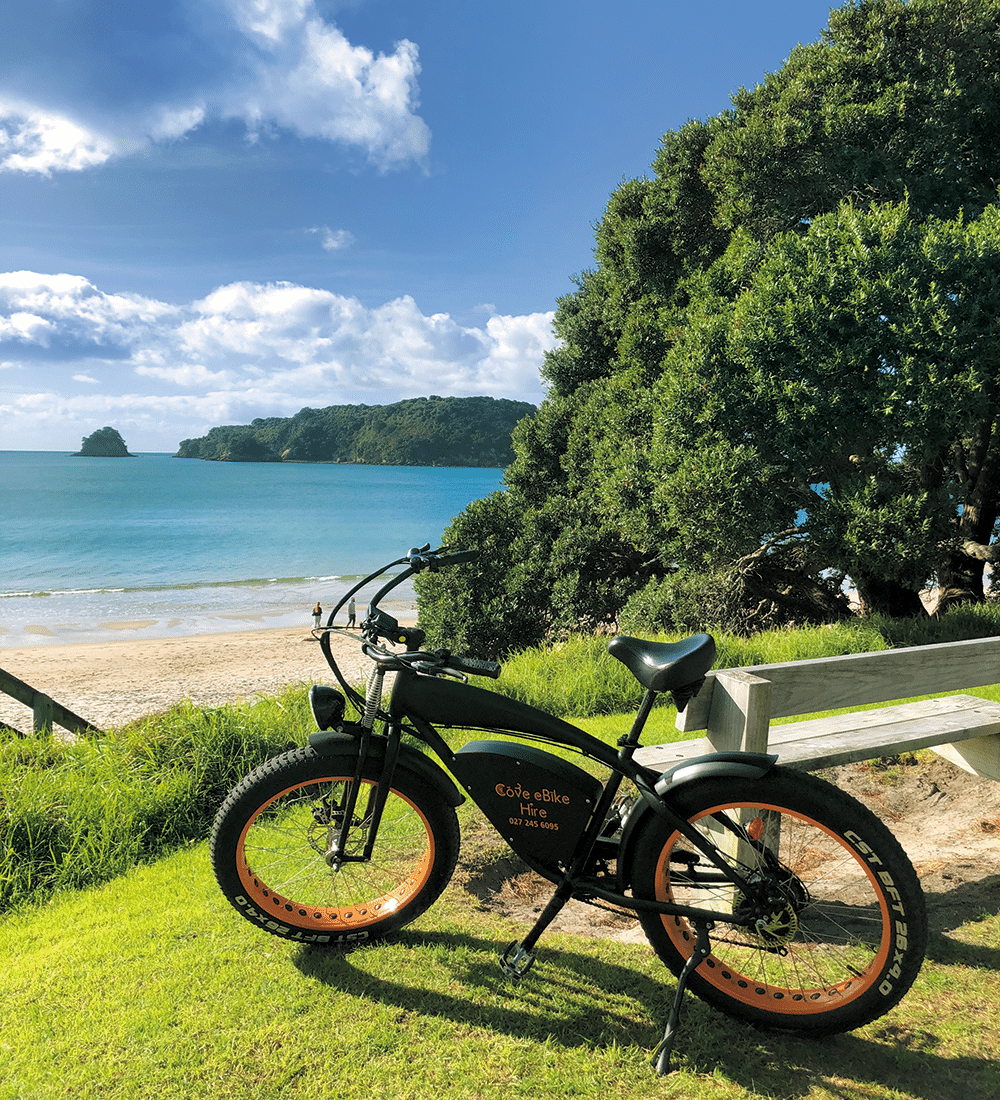
Set up camp in Hahei
Hahei is a small village south of Whitianga. Only about 300 people live there permanently, but many more visit every year. If you prefer to set up camp somewhere and explore from there – instead of moving every day – then Hahei is the perfect spot for you. There’s an excellent campground right by the beach, a small store where you can buy the essentials, a petrol station, a cafe, a brewery and restaurant, as well as a couple of takeaway options and a small gift shop. In other words, you can spend a long time here without missing anything.
From Hahei, you can easily explore – either by car or by bike. If you don’t have your own bike, consider hiring one from Cove eBike Hire for a day or two. Their bikes are super comfortable, and it’s such a fun way to get around.
Hahei is also the starting point for a couple of great walking tracks. The one leading to Cathedral Cove is, of course, the most popular, but make sure you also check out the track to Te Pare Point, which starts from the end of Pa Road and takes you up the hill on the southern end of the beach.
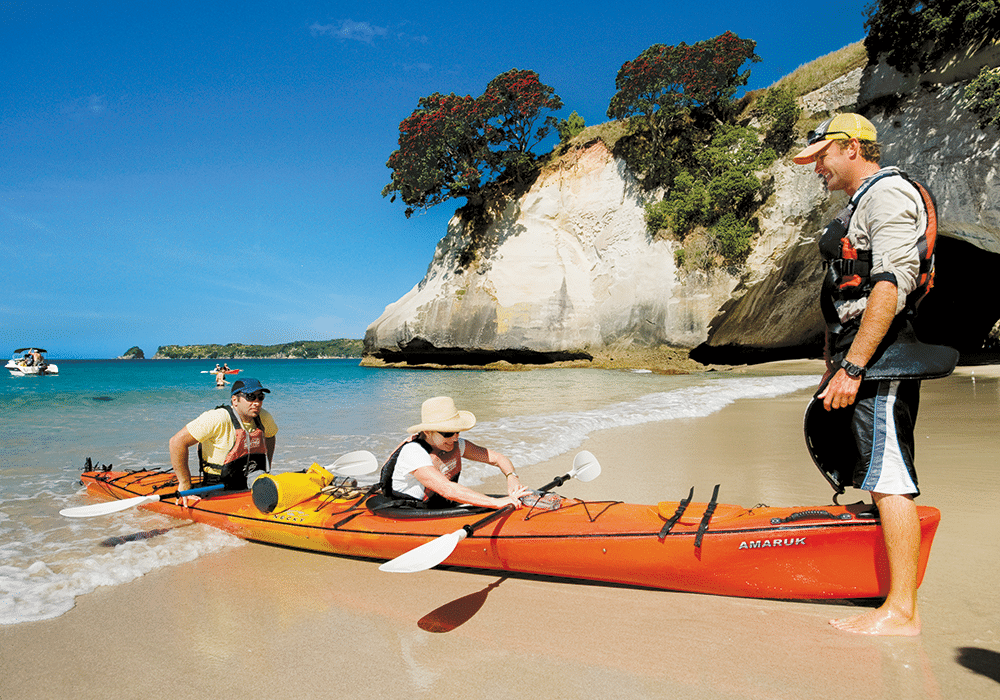
Walk to Cathedral Cove
Cathedral Cove is, without a doubt, one of the highlights. Named after the enormous cathedral-shaped cavern that passes through a rock headland to connect two beaches, it’s probably one of the most visited and photographed sites in the Coromandel.
In winter, you can park at the end of Grange Road. It takes about 30 minutes to walk straight to the cove from there. However, parking costs $15 for four hours, options are limited for larger rigs, and in summer the carpark is closed. Better options might be to park in Hahei and walk up via the track that starts at the northern end of the beach (about 20-30 minutes to the top carpark), or take the shuttle (if it’s operating).
The side trips to Gemstone Bay and Stingray Bay add about 10-15 minutes each, and are absolutely worth doing if you have the time. For those in the mood for a longer walk, try the track to the viewing platform, which turns off the main track shortly after you’ve made it back up the stairs from Cathedral Cove. It adds about 45 minutes to the round-trip, and the views are stunning.
If walking is not your thing, or you love to get on the water, you can reach the cove via water taxi or kayak. The coast is breathtaking, and thanks to the clear water and the marine reserve protection status, you’re likely to encounter some of the local marine wildlife.
Make sure you check the tides. Although the beach is accessible at all tides, you might not be able to get into the famous cave during high tide. Mid to low tide is usually the best time.
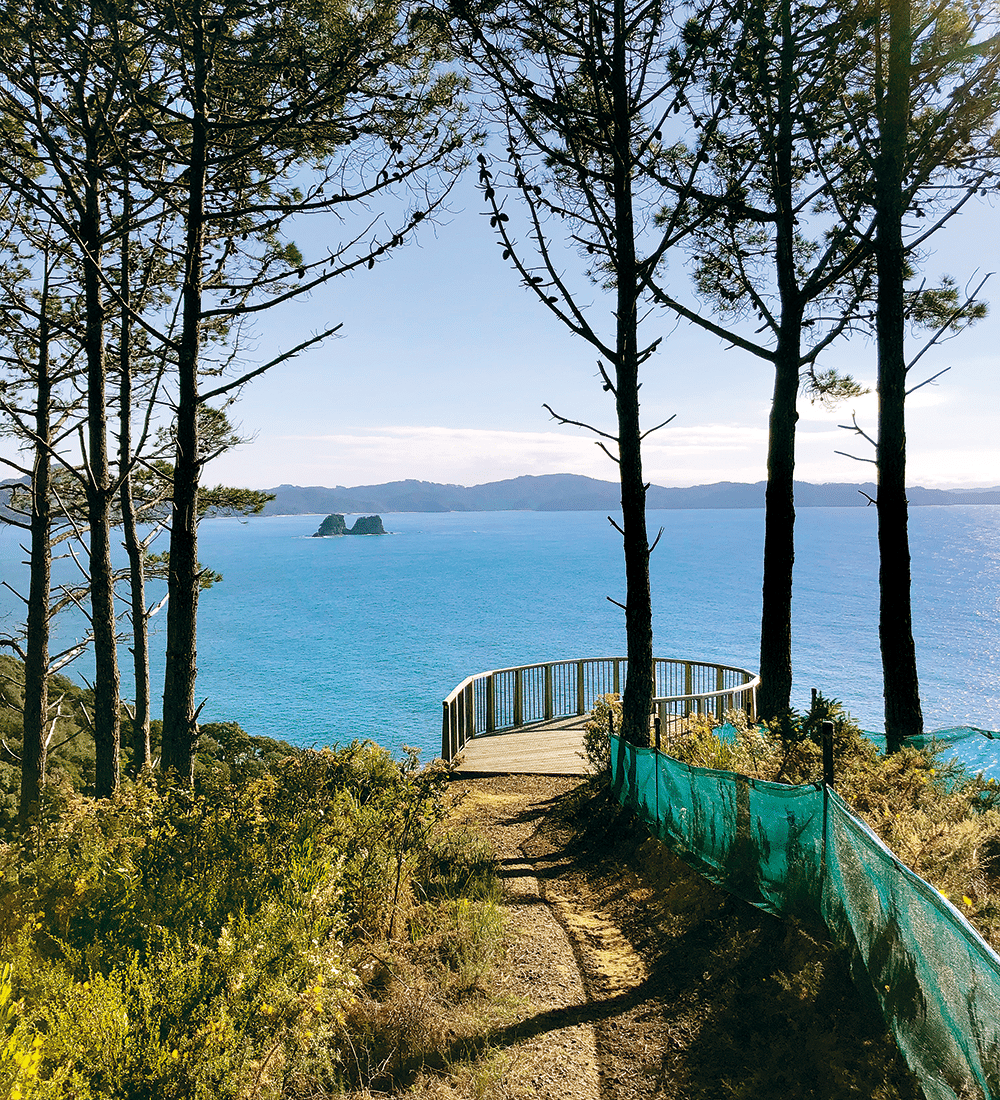
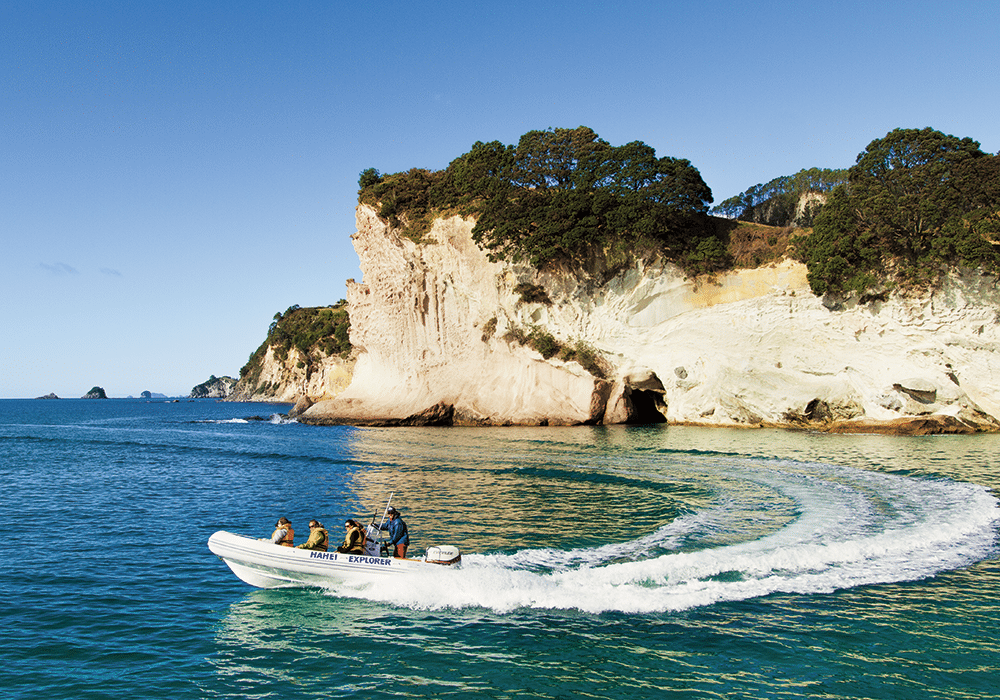
Explore Hot Water Beach
Hot Water Beach is the other famous attraction, a 10-minute drive or 30-minute bike ride from Hahei. Plan to arrive at mid to low tide, and bring a shovel to experience what this beach is so famous for. Start digging a hole about 300 metres from the southern end of the beach by the rocks, and you will likely encounter thermally heated water. If you have enough stamina (or helpers) to dig a big enough hole, you can enjoy a soak in a natural hot tub.
Thanks to its more exposed location compared to neighbouring beaches, the beach is also popular with surfers when the conditions are right.
There are two cafes in the small settlement at the southern end that offer great refuelling options. And if you’re lucky, you might get the opportunity to visit the studios and galleries of local artists (more likely to be open during summer, long weekends and school holidays).
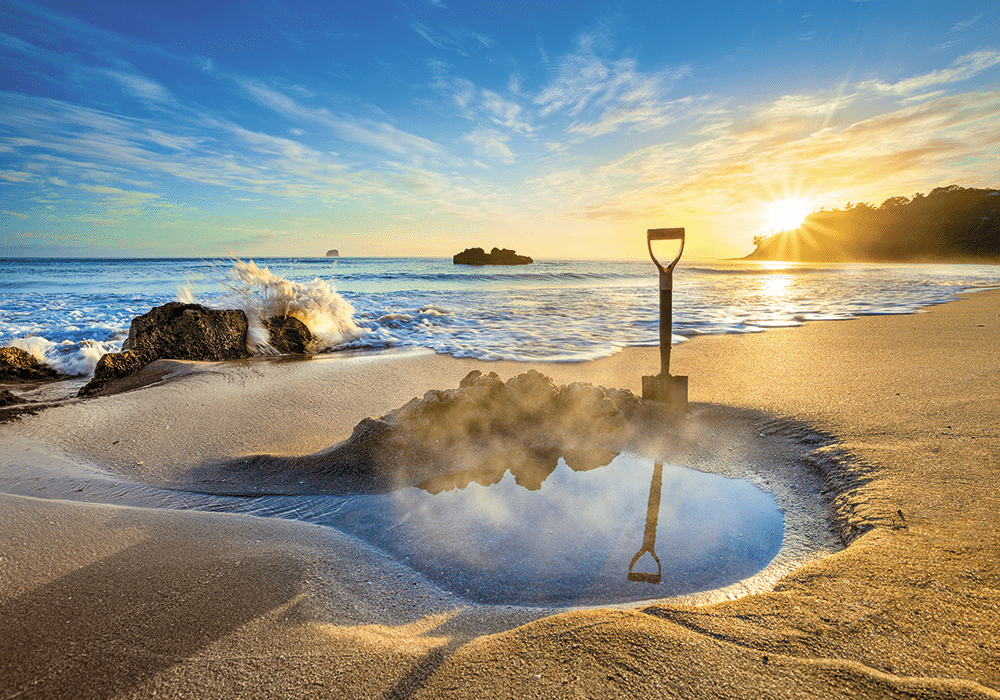
Take the ferry to Whitianga
The township of Whitianga – the largest settlement in Coromandel – is 35 minutes drive north of Hahei Beach via SH 25.
For a more exciting journey, you can drive or bike the 13km to Ferry Landing, and take the Whitianga ferry into town. The trip only takes a few minutes, and the ferry goes back and forth continuously throughout the day. The entrance to the Whitianga Harbour is known for strong currents, and you can often see the ferry going almost sideways to make it to the other side.
If you make your way to Ferry Landing, stop at Cooks Beach for scenic views and maybe a walk along the beach. Once in Whitianga, it’s only a short stroll from the wharf to several cafes and restaurants, the town centre and the beach. If you enjoy hot pools, consider visiting the Lost Springs. Set in beautiful garden surroundings, it’s a great place to relax and recharge.
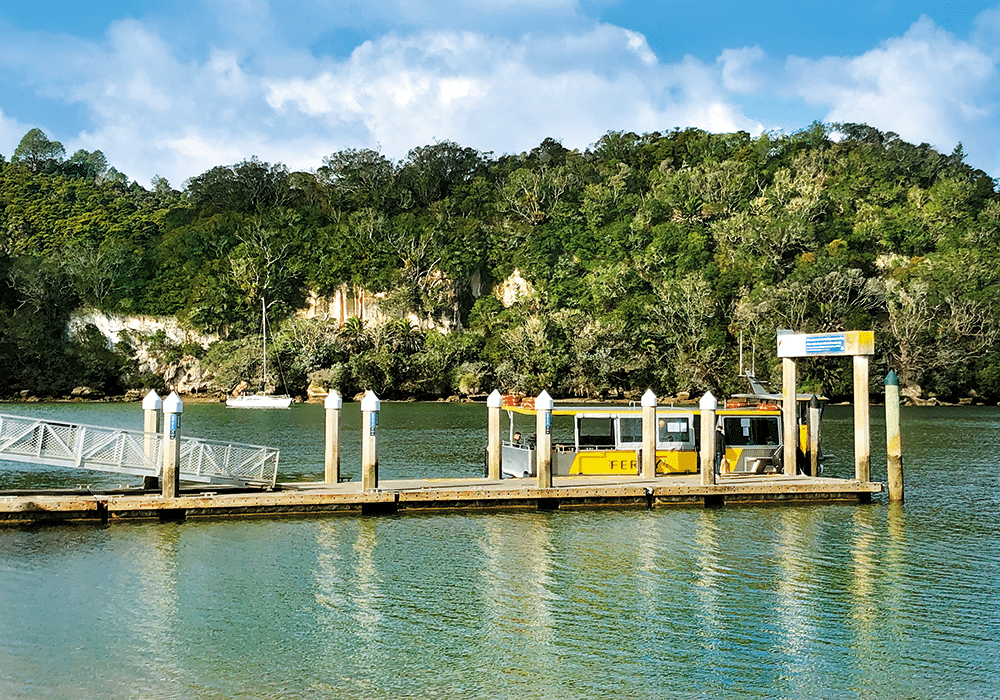
Where to stay
The Holiday Park in Hahei is an excellent option for setting up camp for a few days, and exploring from there. It’s central to most attractions, located right by the beach, very clean and well looked after, and the CampSaver rate makes it very affordable for NZMCA members in winter. However, there are other options.
The Top10 Holiday Park at Hot Water Beach gets excellent reviews, as do Cooks Beach Resort and Flaxmill Campground near Ferry Landing. Whitianga offers several campgrounds as well as an NZMCA park and a few POPs. Whitianga is also welcoming freedom campers, with several options around town, and you can find designated freedom camping areas at Ferry Landing and Cooks Beach. Check the NZMCA app or CamperMate for details, and you’re sure to find a spot that meets your requirements.
If you visit in the off-season, you usually don’t have to worry about finding a place or booking ahead. But remember, if you come in summer it’s a very different story, and many of the campgrounds book out weeks in advance.

